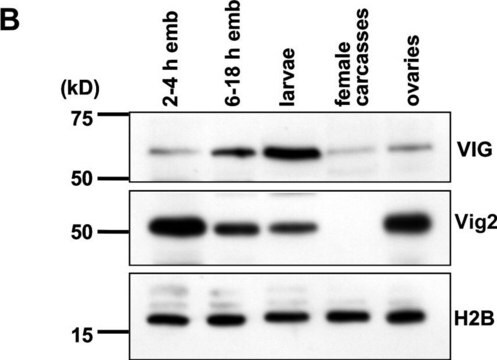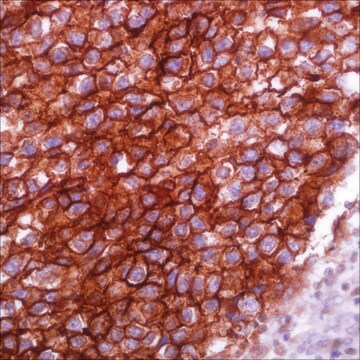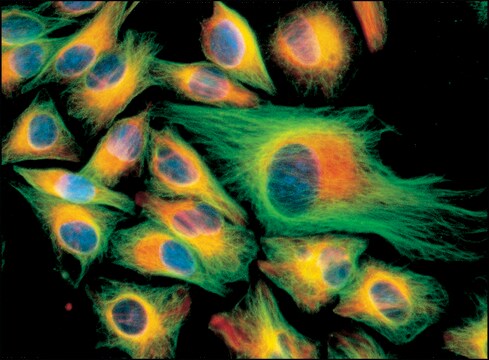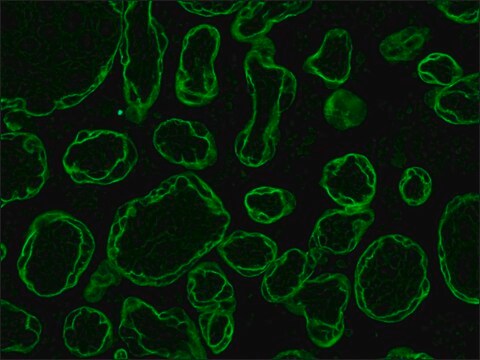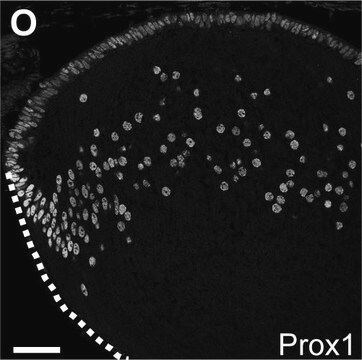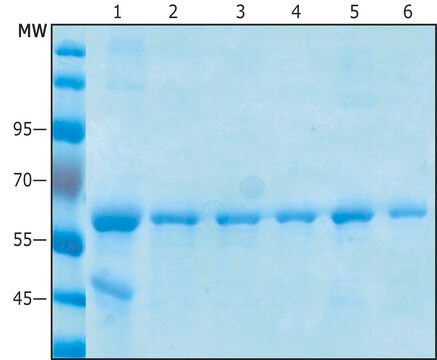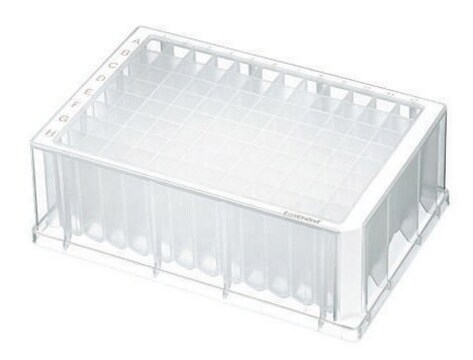Recommended Products
biological source
rabbit
Quality Level
antibody form
serum
antibody product type
primary antibodies
clone
polyclonal
species reactivity
human
manufacturer/tradename
Chemicon®
technique(s)
immunohistochemistry: suitable
western blot: suitable
NCBI accession no.
UniProt accession no.
shipped in
wet ice
target post-translational modification
unmodified
Gene Information
human ... H2BC1(255626)
Specificity
Reacts with histone H2B in human nuclear fractions. No cross-reactivity with other histones, H1, H2A, H3 or H4. Binding of histones from other species has not been tested, but it is likely as the amino acid sequence of histone H2B has been found to be identical in all species examined.
Immunogen
Synthetic peptide
Application
Detect Histone H2B also known as Histone H2B with Anti-Histone H2B Antibody (Rabbit Polyclonal Antibody), that has been demonstrated to work in WB & IHC.
Research Category
Epigenetics & Nuclear Function
Epigenetics & Nuclear Function
Research Sub Category
Histones
Histones
Western blot
Immunohistochemistry on paraformaldehyde treated sections.
Optimal working dilutions must be determined by end user.
Immunohistochemistry on paraformaldehyde treated sections.
Optimal working dilutions must be determined by end user.
Linkage
Replaces: MABE15
Physical form
Rabbit antiserum. Liquid. Contains no preservative.
Storage and Stability
Maintain at -20°C in undiluted aliquots for up to 12 months. Avoid repeated freeze/thaw cycles.
Legal Information
CHEMICON is a registered trademark of Merck KGaA, Darmstadt, Germany
Disclaimer
Unless otherwise stated in our catalog or other company documentation accompanying the product(s), our products are intended for research use only and are not to be used for any other purpose, which includes but is not limited to, unauthorized commercial uses, in vitro diagnostic uses, ex vivo or in vivo therapeutic uses or any type of consumption or application to humans or animals.
Not finding the right product?
Try our Product Selector Tool.
recommended
Product No.
Description
Pricing
Storage Class
10 - Combustible liquids
wgk_germany
WGK 1
flash_point_f
Not applicable
flash_point_c
Not applicable
Certificates of Analysis (COA)
Search for Certificates of Analysis (COA) by entering the products Lot/Batch Number. Lot and Batch Numbers can be found on a product’s label following the words ‘Lot’ or ‘Batch’.
Already Own This Product?
Find documentation for the products that you have recently purchased in the Document Library.
Histone H1 is released from myonuclei and present in rimmed vacuoles with DNA in inclusion body myositis.
Satoshi Nakano, Akiyo Shinde, Kengo Fujita, Hidefumi Ito, Hirofumi Kusaka, Satoshi Nakano et al.
Neuromuscular Disorders null
Yinghong Ma et al.
Journal of cell science, 118(Pt 8), 1607-1616 (2005-03-24)
In mammalian heterochromatin, cytosine bases of CpG dinucleotides are symmetrically modified by methylation. Patterns of CpG methylation are maintained by the action of Dnmt1, the mammalian maintenance cytosine methyltransferase enzyme. We genetically manipulated the levels of CpG methylation and found
Ricardo Martinez-Zamudio et al.
Molecular and cellular biology, 32(13), 2490-2502 (2012-05-02)
The packaging of DNA into nucleosomes imposes obstacles on gene transcription, and histone-modifying and nucleosome-remodeling complexes work in concert to alleviate these obstacles so as to facilitate transcription. Emerging evidence shows that chromatin-associated poly(ADP-ribose) polymerase 1 (PARP-1) and its enzymatic
Daniel R Arnold et al.
Developmental biology, 313(1), 347-358 (2007-11-27)
Growing oocytes accumulate mRNAs and proteins that support early embryogenesis. Among the most abundant of these maternal factors are the histones. Histone mRNA accumulation and translation are mainly restricted to S-phase in somatic cells, and the mechanism by which oocytes
Siwei Ouyang et al.
Neurobiology of aging, 36(10), 2850-2860 (2015-08-11)
The progressive loss of neurons causes neurodegenerative diseases. Because the accumulation of DNA breaks results in neuronal apoptosis, the lack of a variety of DNA damage repair-related proteins contributes to neurodegeneration. The ubiquitin ligase RNF8 plays an important role in
Our team of scientists has experience in all areas of research including Life Science, Material Science, Chemical Synthesis, Chromatography, Analytical and many others.
Contact Technical Service